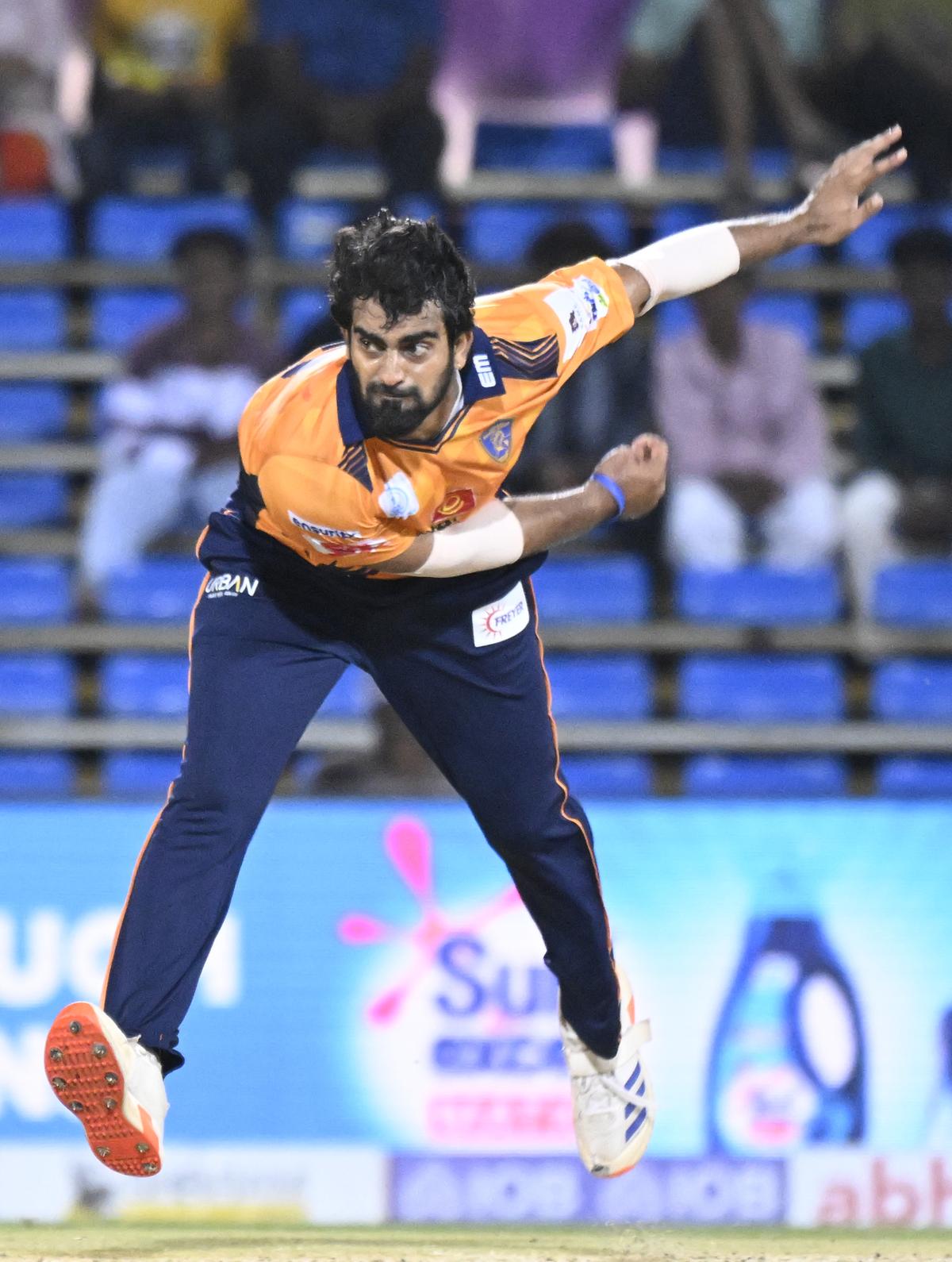
The ninth edition of the Tamil Nadu Premier League (TNPL) got underway on June 5 in Coimbatore, with a rematch of last season’s finalists — Dindigul Dragons and Lyca Kovai Kings — opening the tournament. A week in, with every team having played two games, the action now moves to Salem.
What has unfolded so far is both expected and frustratingly familiar: slow starts with the bat, dominant chases under lights, and a general hesitation to go hard. While a few players have offered glimpses of flair, most teams have reverted to a risk-averse, safety-first style.
The Chepauk Super Gillies (CSG), the league’s most successful side, has jumped to the top of the table with two commanding wins. The Lyca Kovai Kings, in contrast, couldn’t make use of home advantage and is at the bottom. Across the eight games in Coimbatore, two pitches were used. The average score across 16 innings was 160 — respectable, but not daunting.
Only once did a team breach the 200-run mark: CSG’s 212 against the Nellai Royal Kings batting first. That remains an outlier. For the most part, chasing has been the preferred route to success — six of the eight matches were won by the team batting second.
Chasing becomes facile in T20 cricket when the slow pitches get better under lights or if there is a steady advent of dew. But former Indian cricketer and Tamil Nadu head coach W.V. Raman says the reason here is more systemic.
W.V. Raman feels sides need to stop being overly conservative on batting-friendly tracks.
| Photo Credit:
VEDHAN M / THE HINDU
W.V. Raman feels sides need to stop being overly conservative on batting-friendly tracks.
| Photo Credit:
VEDHAN M / THE HINDU
“This is happening because the sides batting first have been overly conservative,” Raman said. “I can understand that approach in the early years, but the pitches have improved. Teams need to stop playing it safe.”
READ: Shreyas Iyer takes SoBo Falcons to T20 Mumbai League final — his third T20 summit this season
A look at PowerPlay numbers backs this up. Only seven of the 16 innings so far have seen teams score more than 50 in the first six overs. That’s well below the standards of modern T20 cricket.
In the IPL this year, the average PowerPlay strike rate was 151.26 — the highest across all 18 seasons. But in the TNPL, teams are still using more classical openers who look to settle in, rather than attack from ball one. The PowerPlay continues to be treated like an exploratory phase rather than a launchpad.
That conservativeness hasn’t translated to consistency either. Interestingly, three of the top six run-scorers so far have strike rates above 140, showing that success and aggression can go hand in hand.
When teams do go hard later, the results are encouraging — but rare. R. Rajkumar’s knock for the Trichy Grand Cholas stood out. Coming in at 45 for 5 while chasing 173, he struck five sixes in a 26-ball 59. His team still lost, but his intent was a reminder of what’s possible.
ALSO READ: India women’s tour of England: Radha Yadav named replacement for injured Shuchi Upadhyay
Swapnil Singh’s cameo for CSG was even more dramatic: five sixes at the death, including a 321.42 strike rate blitz that helped push his team past 200.
These cameos, however, have been scattered. There’s little sustained pressure on bowling units, and most middle orders seem unsure of whether to consolidate or counterattack.
Raman believes this comes down to mindset.
“It’s not that it can’t be done — we’ve seen it being done. Players need to back themselves more. That’s the only way they’ll graduate to bigger platforms like the IPL.”
The bowling, particularly at the death, has leaned heavily on variations. Slower balls have become the default, with yorkers almost disappearing from the playbook. That’s partly tactical and partly a skill issue. Veteran Athisayaraj Davidson, with his slingy action, has found some success, but yorkers at the death have mostly backfired.

Sonu Yadav of Nellai Royal Kings took a hat-trick against Trichy Grand Cholas.
| Photo Credit:
PERIASAMY M/ The Hindu
Sonu Yadav of Nellai Royal Kings took a hat-trick against Trichy Grand Cholas.
| Photo Credit:
PERIASAMY M/ The Hindu
Sonu Yadav’s hat-trick for Nellai Royal Kings — three back-of-the-hand slower balls in the final over against Trichy — was a standout moment. Abhishek Tanwar, CSG’s experienced seamer, has also leaned on knuckleballs to good effect. But outside of these moments, few bowlers have displayed control or consistency to deliver at the fag end.
This, again, raises a broader question: why hasn’t India’s longest-running regional league kept pace with global T20 cricket? Is that on the players alone? Are coaches equipping squads to take more calculated risks, or just setting safe match targets and hoping for execution?
The tournament now moves to Salem, then Tirunelveli and Natham. It’s still early days, and sample sizes are small. But unless batting units shift gears soon, the pattern of middling totals and one-off cameos will persist.








